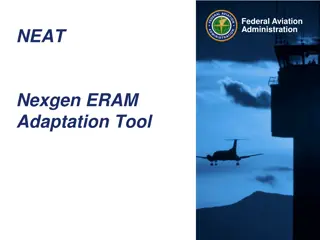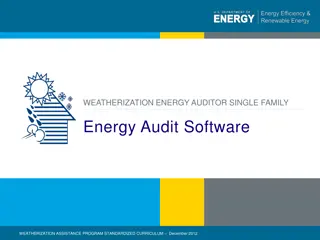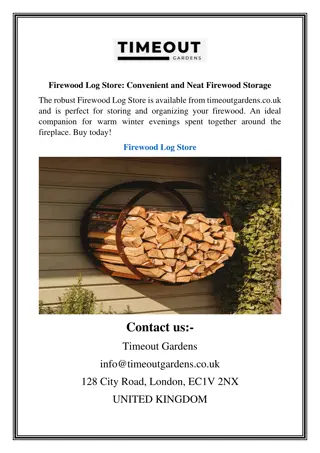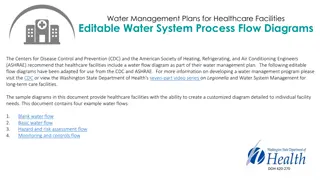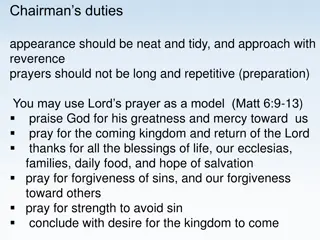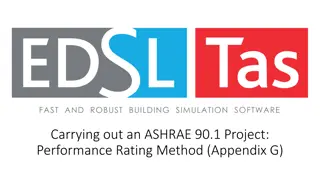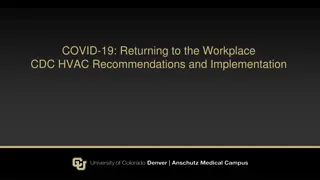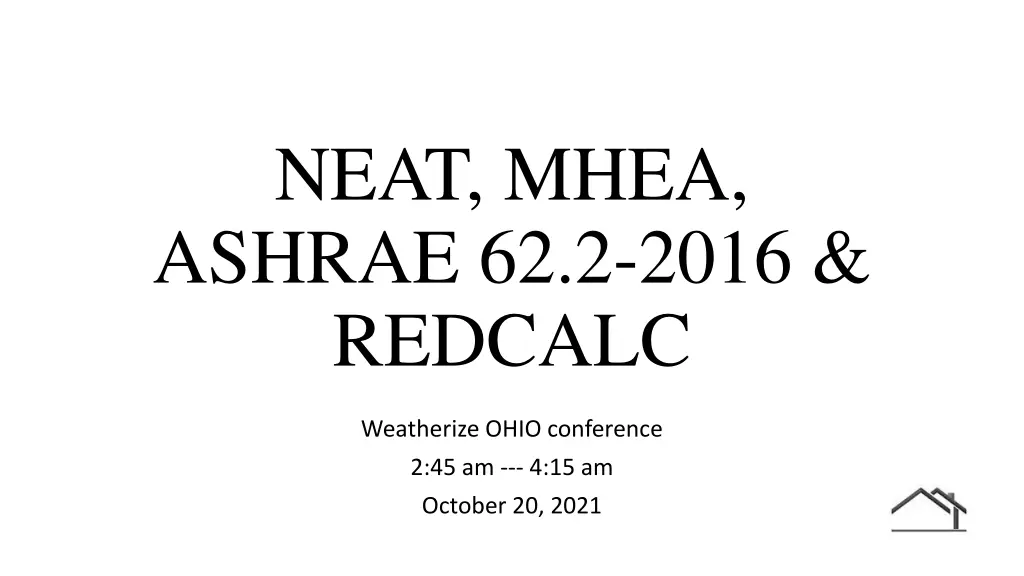
NEAT MHEA and ASHRAE 62.2-2016 Redcalc Weatherize Ohio Conference Highlights
Discover key insights from the NEAT, MHEA, and ASHRAE 62.2-2016 Redcalc Weatherize Ohio conference, including the history and future of NEAT/MHEA, data-saving solutions, and setup library issues. Learn about the importance of saving data, updating libraries, and resolving setup issues to enhance your energy audit practices.
Download Presentation

Please find below an Image/Link to download the presentation.
The content on the website is provided AS IS for your information and personal use only. It may not be sold, licensed, or shared on other websites without obtaining consent from the author. If you encounter any issues during the download, it is possible that the publisher has removed the file from their server.
You are allowed to download the files provided on this website for personal or commercial use, subject to the condition that they are used lawfully. All files are the property of their respective owners.
The content on the website is provided AS IS for your information and personal use only. It may not be sold, licensed, or shared on other websites without obtaining consent from the author.
E N D
Presentation Transcript
NEAT, MHEA, ASHRAE 62.2-2016 & REDCALC Weatherize OHIO conference 2:45 am --- 4:15 am October 20, 2021
NEAT / MHEA History and Future Original Audit was called Project Retro Tech Ohio submitted and was approved for Priority List of Measures based upon Housing Type A-G and I H Then NEAT & MHEA became a requirement in 2014 (???) DOE is moving towards a web- based system where NEAT & MHEA will be combined with: MulTEA = Multifamily Tool for Energy Audits, and Health and Safety audit for single family homes and individual units in multifamily buildings Not a requirement for PY 21 or 22
Issue #1 Saving Data Why is this important? Computers get lost. They breakdown. They stop working. You may get a new computer and want to transfer the data from your old unit. Data is located at C:\ProgramData\Weatherization Assistant 8-9 Stored as wa 8-9.mdb file
Issue #1 Saving Data To address the issue Copy and paste wa 8-9.mdb to cd or thumbdrive on a regular timeframe
Issue #2 Setup Library Must be updated at least annually, possibly twice a year based upon prices When you update, CHANGE the name of the library. NEAT / MHEA will go to the Setup Library you have entered in the Client Information Tab and the Audit Information Tab. If you are updating the Setup Library without changing the name, all historical data will be changed.
Issue #2 Setup Library Two reasons this may be an issue. (1) Looking at previous customer. (2) Audit checklist asks for Correct Cost Libraries selected. To resolve the issue, make a copy of the current (or existing library). Rename it, say ABC CAA 2021_22 Library. Then update the pricing.
Issue #3 Derating Heating/Cooling Systems May be used when addressing a system that is utilizing a compressed refrigerant cycle to provide heating or cooling. Degraded Efficiency = (Base EFF)*.99age Where: Base EFF = typical efficiency of Pre-retrofit equipment when new (Seasonal Energy Efficiency Ratio (SEER), Energy Efficiency Ratio (EER) or Heating Seasonal Performance Factor (HSPF)) Age = Age of equipment in years
Issue #3 Derating Heating/Cooling Systems Example An existing HVAC unit that is 20 years old, was originally at 10 SEER Degraded SEER = 10 * .9920 Degraded SEER = 10 * .818 Degraded SEER = 8.18
Issue #4 Justifying installation of Heat Pump Ability to replace electric furnace with Heat Pump.
Issue #5 Identifying the maximum amount that can be expended in Infiltration Reduction and Duct Sealing. In the Infiltration Reduction and Duct Sealing (if applicable) boxes, enter the value of $1.00. You will get a message that states Warning: Value is below the Reasonable minimum of 10 Click OK Run Audit. Recommended Measures will show cost of $1.00 and SIR. The SIR is the maximum amount that can be charged for that category to achieve an SIR of 1.0.
Issue #6 Infiltration Reduction (or Air Sealing) does not have to have an individual SIR of 1.0 or greater. Per Weatherization Program Notice (WPN) 19-4, Attachment #1 Air Sealing is the exclusive energy conservation measure that is not required to show a post-weatherization individual SIR of 1.0 or greater. The package of weatherization measures, including costs and projected savings for air sealing, must have a post-weatherization SIR of 1.0 or greater.
Issue #7 Duct Operating Pressures need to be measured. All four (4) methods of evaluating duct sealing require inputs for Duct Operating Pressure Before Duct Sealing and After Duct Sealing In NEAT, both the Supply and Return duct operating pressures are required. In MHEA, only the Supply duct operating pressure is required. Each test method has positive and negative aspects. These have been debated and will continue to be debated in the Building Science community.
Issue #7 Duct Operating Pressures need to be measured. For MHEA audits, Ohio weatherization providers have been instructed to use the Pressure Pan test method. Weatherization providers have been instructed to input 35 pa as the After Duct Sealing Duct Operating Pressure. This is inaccurate. The After Duct Sealing Duct Operating Pressure should be measured and if it can t be measured, (I contend) that a value closer to the Before Duct Sealing Duct Operating Pressure be input.
NEAT / MHEA Summation 1. Saving Data 2. Setup Library 3. Derating Heating / Cooling Systems 4. Justifying installation of Heat Pumps 5. Identifying the maximum amount that can be expended in Infiltration Reduction and Duct Sealing 6. Infiltration Reduction (or Air Sealing) does not have to have an individual SIR of 1.0 or greater 7. Duct Operating Pressures need to be measured
ASHRAE 62.2 - 2016 American Society of Heating, Refrigerating and Air-Conditioning Engineers Standard 62.2 is a National code for Ventilation and Indoor Air Quality There are multiple versions (1989, 2010, 2013, 2016, 2019), but DOE and the Weatherization Program are staying with the 2016 version. The 1989 standard produced BTLs (Building Tightness Limits) The 2010 standard allowed no multi-family dwellings The 2013 standard allowed multi-family dwellings for 3 stories or less The 2016 version included multi-family dwelling units (no matter the building height) and a de minimis calculated ventilation rate of 15 cfm
Half Baths are not to be included in calculation. Measure the existing exhaust but keep as part of exhaust fan inventory. Height of dwelling is from the lowest to the highest above grade points within the dwelling pressure boundary. Include above grade part of the basement if the basement is within the pressure envelope. Floor area should include above and below grade finished areas suitable for year-round use. Basements (or parts of basements) should be included if they are finished in a manner similar to the rest of the dwelling. If an exhaust device can not be measured nor rated, the exhaust device airflow shall be assumed to be zero.
RED CALC == Free or Pro Besides ASHRAE 62.2-2016, RED CALC FREE has these other tools: Ventilation Sizing Airflow Measurement Insulation and R-value Moisture Domestic Hot Water Electrical Usage Weather Data
Thank you. Tom Andrews Andrews Home Energy Services, LLC



